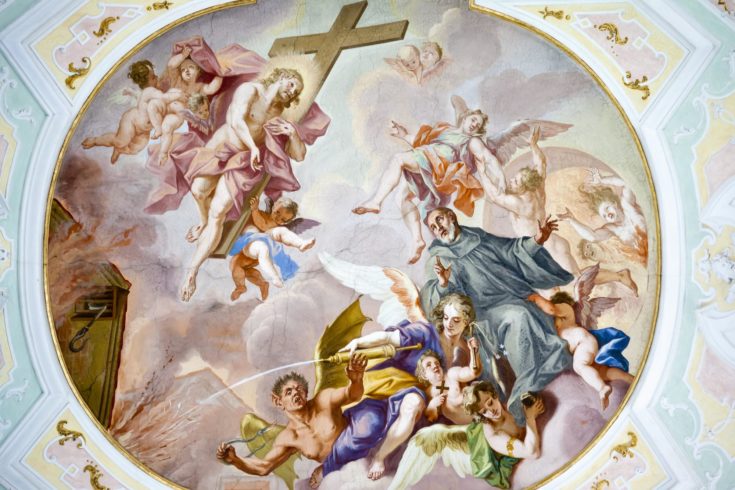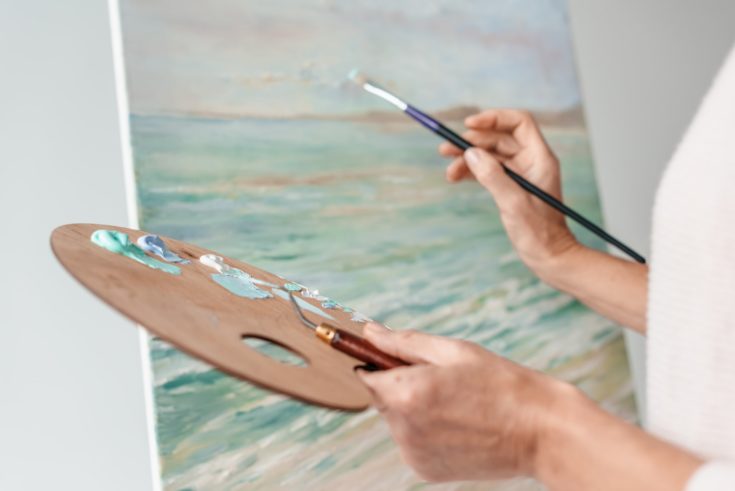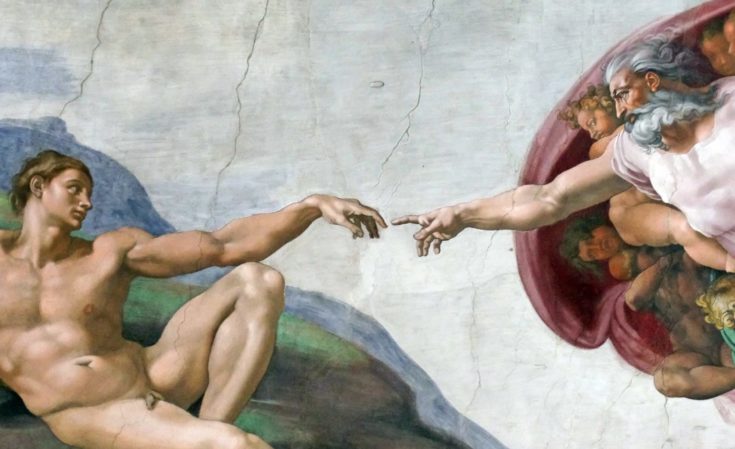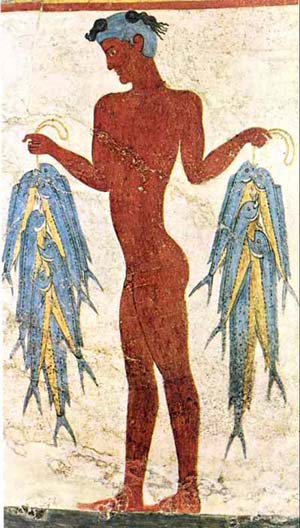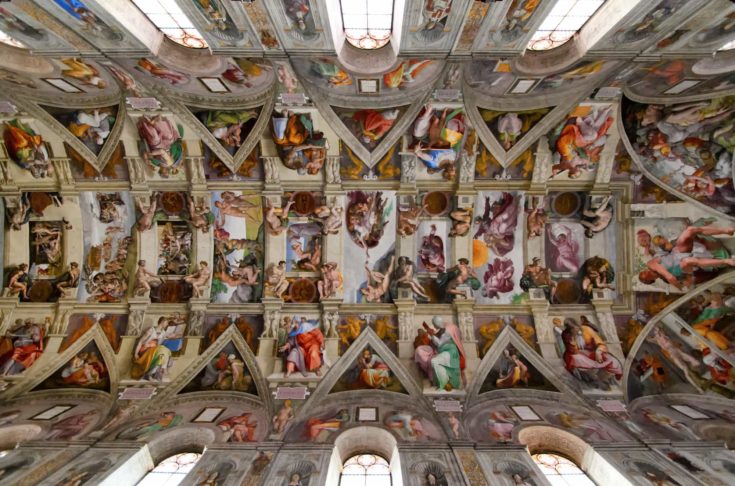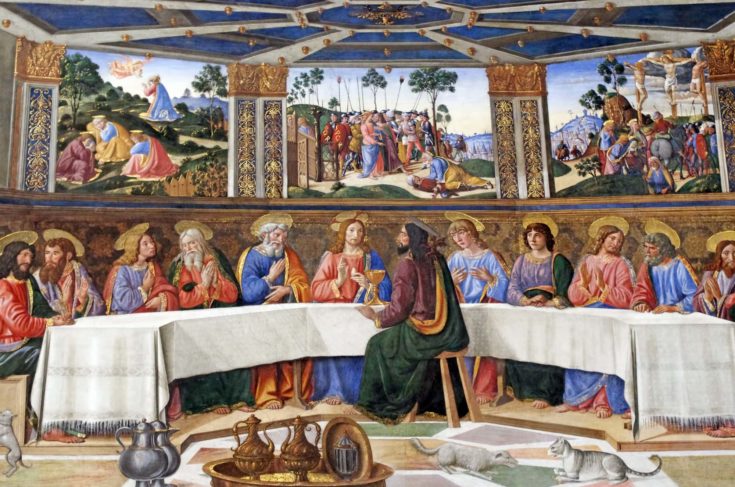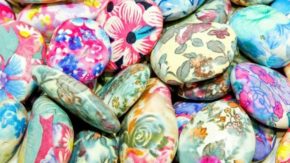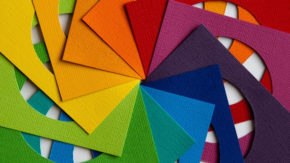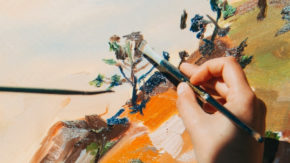So, what is fresco painting exactly? Well, fresco art is one of the most widely recognized methods of painting, yet people have rarely heard of the term itself. It is an ancient technique used to paint murals or walls with pigments laid on fresh plaster, and ultimately, it is a beautiful process where art meets chemistry.
In this guide we are going to talk you through exactly what it is, what is special about it, the three most common types and the most famous fresco examples of all.
So, whether you are here because you are embarking on your fresco painting journey, or you are here to simply educate yourself on the topic, read on to find out more about this stunning painting medium.
What is Fresco Painting?
Simply put, fresco painting is the application of fresh pigments onto a thin layer of lime plaster, and as the painting dries the pigment and lime plaster react with the air which settles the plaster and enhances the colors.
Because this process usually involves painting on wet plaster, you only have a set window in which you can paint on it, so a combination of speed and precision is important here.
For this reason, it is completed in sections, also known as Giornata, which means day in Italian, which is why you’ll often see sections or faint lines in the painting itself, and these sections often signify the artist’s days’ work.
This method of painting is famously associated with the Italian Renaissance era, yet it goes back millennia. In Italian, fresco means fresh, which is used to describe the process of adding the pigment to fresh and wet plaster.
What Makes Fresco Painting Different
Unlike other forms of painting, such as watercolor, you cannot remove or mellow down a color tone once you have applied it to the plaster. For this reason, it is always best to plan your painting before you lay the plaster, and have all your pigments ready and mixed, as well as all of the tools that you need laying out before you.
If you do make a mistake then the only way to truly rectify this is to re-plaster the area, and not only will you need plastering skills or a plasterer to hand, but it will also take weeks for your mistake to dry fully before you can plaster over it and start painting again.
You might have heard of the golden hour which applies to many aspects of life, and here it is used to describe the few hours (not just one as the name would suggest!) whereby the plaster starts to dry and soak the pigment up, whilst still being wet enough to paint the pigment onto the surface.
However, the golden hour also signifies that you have almost reached the end of the plaster’s peak, and soon the plaster will be too dry to be workable. Unlike many painting mediums, you cannot just let it sit and come back to it.
Types of Fresco Painting
There are three commonly used methods of fresco painting:
Buon – also known as a true fresco painting, this is where the pigment is directly painted onto freshly mixed plaster, and it is buon fresco that is thought to be the original fresco. Because the plaster is already wet the pigment does not need to contain a binding agent, it can simply be mixed with water.
Mezzo – this is known as medium fresco, where the pigment is painted onto almost dry plaster. Whilst this is not the true fresco, because it is a much easier method to control it became most popular among artists during the Italian Renaissance and ever since.
Secco – just like the prosecco beverage, this method involves a dry agent which, in this case, is the plaster. Because it is completely dry, the pigment needs to be mixed with a binding agent. The egg yolk was traditionally used as the chosen ingredient, however, glue adhesive is now the preferred agent, and it is much easier to use too!
Famous Frescos
Many people have never heard of the term ‘fresco painting’, but it is very likely that you have seen the following famous frescos:
The Fisherman
This is one of the oldest paintings from the Minoan Bronze Age on the Greek island of Santorini, which dates back to 1640 B.C. The island suffered a volcanic eruption which buried the settlement, but these works of art were thankfully preserved with the volcanic ash.
Other old and famous buon fresco paintings can be found in Pompeii and the Buddhist Ajanta Caves found in India, as well as across the world.
The Sistine Chapel Ceiling
This is one of the most visited art pieces in the world, and it is the famous frescoed ceiling in the Vatican City. Michelangelo was commissioned in 1508 to repaint the ceiling of the Sistine Chapel and using fresco techniques it took him 4 years to complete.
He painted 343 figures in total across several different scenes, and he also scraped sections of the wet plaster to create a 3D effect throughout the ceiling, which gives it an impressive depth.
The Last Supper
Another famous artist, Leonardo da Vinci, was commissioned to create a large wall painting showing Jesus’s last supper. This is one of the most famous paintings using the dry secco method, and it can be found in Milan, Italy. He also used a white lead base which helped to lighten up the tones to give it an almost heavenly effect.
Contemporary Fresco
Having featured in the American Art Collector, Ali Cavanaugh is a contemporary fresco painter who discovered her talent almost by accident having re-plastered her new home in Santa Fe.
Her method of using watercolor paint on kaolin clay is used to create realistic portraits and other bright and beautiful artworks, and she is one of many artists working to keep this exquisite artistic medium alive.
Starting Your Fresco Journey
Pigments can often be expensive, however, if you are just starting out then this beginner’s pigment set is great for those who want to start their journey and experiment with a set of different colors. Using soft bristle round paintbrushes is key here because you need to get the paint onto the plaster without disturbing the plaster itself.
To see this painting process in action, Liana Tumino who is a contemporary fresco artist demonstrates how she does this during her short film showcasing a 3 section fresco.
Final Thoughts
So, now you know what fresco painting is, why don’t you give it a try yourself? It is a skill that requires a lot of practice and skill, but as they say, practice makes perfect!
